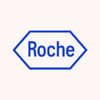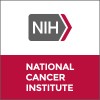
PACIFIC: Primary Mediastinal Large B-cell Lymphoma Treated With Antibody Therapy, Checkpoint Inhibitor...
Ann Arbor Stage I Primary Mediastinal (Thymic) Large B-Cell LymphomaAnn Arbor Stage II Primary Mediastinal (Thymic) Large B-Cell Lymphoma2 moreThis phase II trial studies the effect of brentuximab vedotin and nivolumab alone and in combination with rituximab, cyclophosphamide, doxorubicin, and prednisone in treating patients with untreated, stage I-IV primary mediastinal large B-cell lymphoma. Brentuximab vedotin is a monoclonal antibody, called brentuximab, linked to a toxic agent, called vedotin. Brentuximab is a form of targeted therapy because it attaches to specific molecules (receptors) on the surface of cancer cells, known as CD30 receptors, and delivers vedotin to kill them. Immunotherapy with monoclonal antibodies, such as nivolumab, may help the body's immune system attack the cancer, and may interfere with the ability of tumor cells to grow and spread. Rituximab is a type of antibody therapy, which targets and attaches to the CD20 protein found on the surface of blood cells with cancer and some healthy blood cells. Chemotherapy drugs, such as cyclophosphamide, and doxorubicin, work in different ways to stop the growth of cancer cells, either by killing the cells, or by stopping them from dividing. Prednisone is a steroid, a hormone (chemical messengers) with multiple roles, notably in the immune system and inflammation reduction. Steroids are poisonous to lymphocytes (white blood cells from which lymphomas develop). Giving brentuximab vedotin and nivolumab in combination with rituximab, cyclophosphamide, doxorubicin, and prednisone may help to control the disease and be a less harmful regimen than standard chemotherapy in patients with primary mediastinal large B-cell lymphoma.

Decitabine-primed Tandem CD19/CD20 CAR T Cells Treatment in r/r B-NHL
Relapsed and Refractory B-cell Non-Hodgkin's LymphomaDecitabine-primed Tandem CD19/CD20 CAR T CellsThis is an open-label, phase 1/2 study has the primary objective of decitabine-primed tandem CART 19/20 in patients with B-NHL who were confirmed as r/r B cell Non-Hodgkin's Lymphoma. A total of 19 to 33 patients are planned to be enrolled and receive decitabine-primed tandem CART 19/20 cell infusion. Phase 1 (9 to 18 cases) is dose escalation part, and phase 2 (10 to 15 cases) is expansion cohort part.

Study of TG-1801 Alone or in Combination With Ublituximab in Subjects With B-Cell Lymphoma or Chronic...
CLLSLL8 moreThe primary objective of this study is to determine the recommended phase 2 dose (RP2D) and characterize the safety profile of TG-1801. As per protocol v3.0, ublituximab will be discontinued.

A Study Evaluating the Safety, Efficacy and Pharmacokinetics of Venetoclax in Combination With Polatuzumab...
LymphomaLarge B-Cell1 moreThis Phase Ib, open-label, multicenter study evaluates the safety, efficacy, and pharmacokinetics of venetoclax in combination with Pola + R-CHP in previously untreated participants with BCL-2 IHC-positive DLBCL. Approximately 50 participants will be enrolled in this study in five consecutive cohorts each consisting of approximately 10 participants.

Autologous Cells Derived Anti-CD19 CAR-Engineered T Cells With Concurrent BTK Inhibitor for B Cell...
Diffuse Large B Cell LymphomaBurkitt Lymphoma3 moreThis is a single-center, open-label and pragmatic clinical trial to evaluate the primary efficacy and safety of anti-CD19 chimeric antigen receptor (CAR)-modified T cells (CART-CD19) with concurrent BTK inhibitor in patients with relapsed or refractory B cell lymphoma

Acalabrutinib and Venetoclax With or Without Early Obinutuzumab for the Treatment of High Risk,...
Recurrent Chronic Lymphocytic LeukemiaRecurrent Small Lymphocytic Lymphoma2 moreThis phase II trial studies how well acalabrutinib and venetoclax with or without early obinutuzumab work for the treatment of chronic lymphocytic leukemia or small lymphocytic lymphoma that is high risk, has come back (recurrent), or does not respond to treatment (refractory). Acalabrutinib may stop the growth of cancer cells by blocking some of the enzymes needed for cell growth. Venetoclax may stop the growth cancer cells by blocking BCL-2 protein needed for cell growth. Immunotherapy with monoclonal antibodies, such as obinutuzumab, may help the body's immune system attack the cancer, and may interfere with the ability of tumor cells to grow and spread. Giving acalabrutinib and venetoclax together with early obinutuzumab may improve clinical outcomes and control the disease.

Ivosidenib in Treating Patients With Advanced Solid Tumors, Lymphoma, or Histiocytic Disorders With...
Recurrent EpendymomaRecurrent Ewing Sarcoma31 moreThis phase II Pediatric MATCH trial studies how well ivosidenib works in treating patients with solid tumors that have spread to other places in the body (advanced), lymphoma, or histiocytic disorders that have IDH1 genetic alterations (mutations). Ivosidenib may block the growth of cancer cells that have specific genetic changes in an important signaling pathway called the IDH pathway.

Donor Stem Cell Transplant With Treosulfan, Fludarabine, and Total-Body Irradiation for the Treatment...
Acute LeukemiaAcute Lymphoblastic Leukemia18 moreThis phase II trial studies how well a donor stem cell transplant, treosulfan, fludarabine, and total-body irradiation work in treating patients with blood cancers (hematological malignancies). Giving chemotherapy and total-body irradiation before a donor stem cell transplant helps stop the growth of cells in the bone marrow, including normal blood-forming cells (stem cells) and cancer cells. It may also stop the patient's immune system from rejecting the donor's stem cells. When the healthy stem cells from a donor are infused into the patient, they may help the patient's bone marrow make stem cells, red blood cells, white blood cells, and platelets. The donated stem cells may also replace the patient's immune cells and help destroy any remaining cancer cells.

Phase I Master Protocol of Novel Combination Therapy for Patients With Relapsed or Refractory Aggressive...
LymphomaB-CellThe purpose of this study is to find the highest dose of a new drug, in combination with standard drugs, which can be tolerated without causing very severe side effects. The study treatment is new agents in combination with R-GDP or an equivalent regimen.

R-CHOP Combined With Lenalidomide in the First-line Treatment for Patients With Diffuse Large B...
Diffuse Large B Cell LymphomaThis is a prospective single arm, multi-center, phase II clinical trial to observe the efficacy and safety of R-CHOP (Rituximab-Cyclophosphamide, Epirubicin, Vincristine and Prednisone) combined with lenalidomide in the first-line treatment for patients with medium to high risk/high risk diffuse large B cell lymphoma.
